How to classify water pumps? – A Comprehensive Guide
Estimated Reading Time: 8 minutes
This article will show you the categorization of water pumps from different perspectives: the working principle, the application fields, other dimensions… It will help us choose the right pump for our systems.
Classification according to the working principle
The working principle should be the most important classification method of the water pump. Therefore, we will list the main types of water pumps according to their working principle below and will use a GIF image for each to show how the pumps work.
Centrifugal Pump
The centrifugal pump is the most common type of water pump. It is used to transport fluids by the conversion of rotational kinetic energy to the hydrodynamic energy of the fluid flow. The rotational energy typically comes from an engine or electric motor. Read more about centrifugal pump…
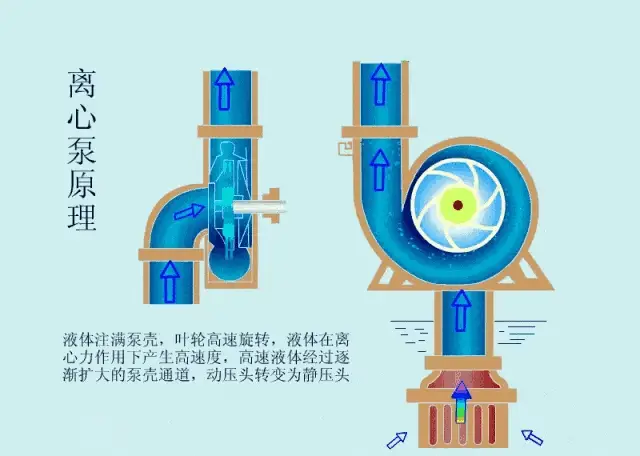
Diaphragm Pump
A diaphragm pump (also known as a Membrane pump) is a positive displacement pump that uses a combination of the reciprocating action of a rubber, thermoplastic or teflon diaphragm and suitable valves on either side of the diaphragm (check valve, butterfly valves, flap valves, or any other form of shut-off valves) to pump a fluid. Read more about diaphragm pump…
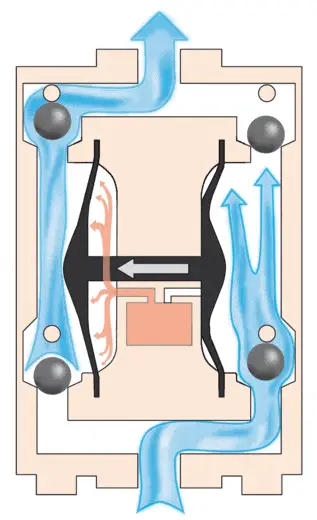
Peristaltic Pump
A peristaltic pump, also commonly known as a roller pump, is a type of positive displacement pump used for pumping a variety of fluids. The fluid is contained in a flexible tube fitted inside a circular pump casing. Most peristaltic pumps work through rotary motion, though linear peristaltic pumps have also been made. Read more about peristaltic pump…
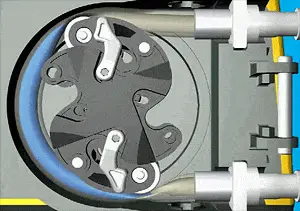
Axial-flow Pump
An axial-flow pump, or AFP, is a common type of pump that essentially consists of a propeller (an axial impeller) in a pipe. The propeller can be driven directly by a sealed motor in the pipe or by electric motor or petrol/diesel engines mounted to the pipe from the outside or by a right-angle drive shaft that pierces the pipe. Read more about axial-flow pump…
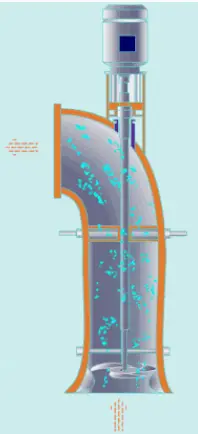
Gear Pump
A gear pump uses the meshing of gears to pump fluid by displacement. Read more about gear pump…
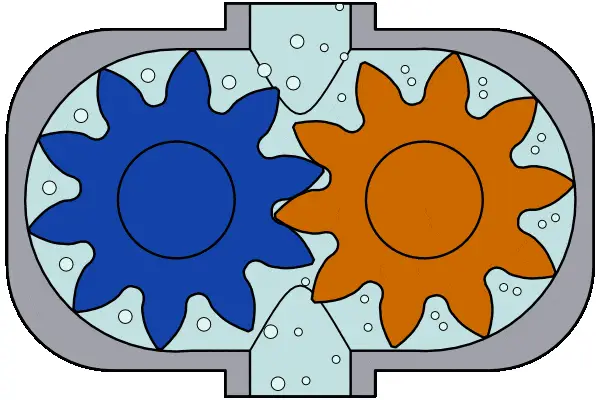
Classification according to the application fields
It is challenging to categorize pumps by field of application. Because the water pumps, especially the small ones, are being used in more and more areas. Therefore, we will only cite some typical applications and narrow the discussion to small water pumps.
Circulation Pump
A circulation pump usually refers to a small water pump used in the circulating system of machines to transport cooling liquid. It was widely used in various types of equipment, such as medical equipment, electric automotive, paper shredders, plumbing mattresses, aquarium fish tank, laser machines, air-conditioning, PC, data center servers, beauty equipment, etc.
As technology develops, the liquid cooling system shows the incomparable advantages of the air cooling system and has been applied to more and more types of equipment. As the core component of the cooling system, the circulation pump usually needs high durability & reliability and low noise. It also needs to be compact, easy to install, and highly efficient.
Actually, the circulating pumps contain many sub-names. You can use the equipment to name the corresponding pump. We collectively call them circulating pumps to simplify the classification.
Fountain Pump
A fountain pump is used in fountains or water features to beautify the environment. In the past few decades, fountain waterscapes have been used primarily in the urban landscape, providing a good place for people to relax after a meal.
As people’s living standards improve, more small or medium-sized fountains have appeared in bars, KTVs, concert venues, theaters, hotels, restaurants, musicals, and other public places. As a result, it is replacing traditional fountains in various scenes.
What kind of pumps do the fountains use? A powerful AC electric water pump is the most popular option in the past. Its advantages are strong power and convenient power supply. Its disadvantage is that it is difficult to install, inconvenient to maintain, and has potential safety hazards.
Compared with large AC water pumps, the advantages of small DC water pumps are high safety, small size, and easy installation and maintenance.
And with the development of technology, small DC pumps can provide more and more pressure with less power consumption. And at the same time, it can be combined to form an enormous fountain.
Aquarium Pump
An aquarium pump is used in the aquarium fish tank to circulate water and provide power for your filtration system. In addition, it can also be used to power other devices such as protein skimmers, drain or fill your tank, or even mix up saltwater in holding tanks for water changes.
Booster Pump
As its name suggests, a booster pump is used to increase the pressure of the water. It is mainly used for water heaters or domestic water boosting in high-rise residential buildings. The main requirements of a booster pump are that the pressure is high enough and has a good silent performance.
Irrigation Pump
An irrigation pump is used to pump water from a lower to a higher level from which the water then flows through channels to the fields requiring irrigation.
High-Pressure Washer Pump
The high-pressure washer pump has been widely used in the car washing field in the past and also other cleaning applications now. It requires a pressure of 1000 PSI or more, and good portability.
Classification according to other perspectives
We can also classify pumps from many other dimensions, such as power suppliers, materials, self-priming or not, single-stage or multi-stage, horizontal or vertical (structure), submersible or not, usage media, etc.
Therefore, you will often see these pump names: electric water pump, AC water pump, DC water pump, 12v water pump, 24v water pump, solar water pump, magnetic drive pump, battery water pump, plastic water pump, submersible water pump, portable water pump, oil pump, etc.
Which type of water pump is BLDC pump?
BLDC PUMP is a kind of small brushless DC centrifugal pump. It has many advantages such as safety, compact size, high efficiency, long lifespan, good durability & reliability, low noise, etc.
BLDC pump was applied to more and more fields. It is especially suitable for the 24hours continuous running application scenarios that require super durability & reliability. Click to see when you should choose a BLDC pump.

